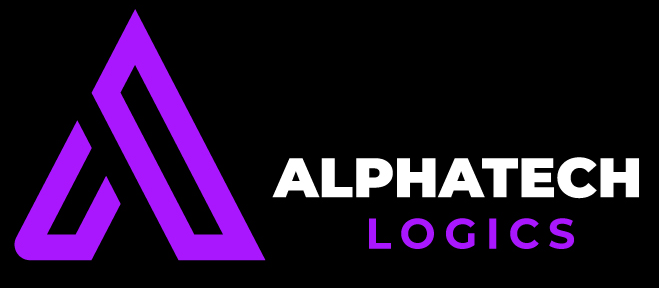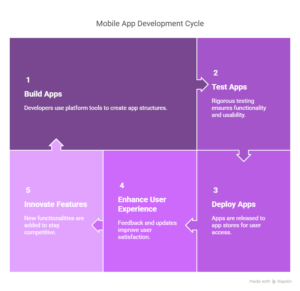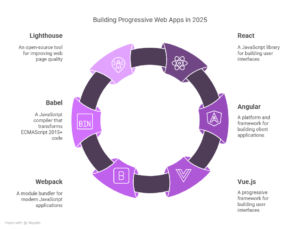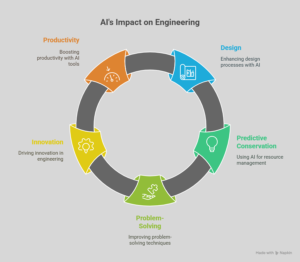In today’s mobile-first world, mobile apps aren’t a fad — they’re a necessity. Whether you’re creating a social network, eCommerce site, or productivity app, the development platform used determines success or failure.
To help you get started (or upgrade to something better), I’ve put together a list of the top mobile app development platforms of 2025 that businesses and developers are leveraging to build high-quality, scalable apps.
1. Flutter (by Google)
Flutter dominated the cross-platform space — and it just won’t stop. It enables you to develop iOS, Android, Web, and Desktop applications from a single codebase.
Key Features:
⦁Uses Dart programming language
⦁Rapid hot reload for fast development
⦁Cupertino and Material widgets with beautiful, customizable UI
⦁Native performance
Recommended by: Startups, MVP projects, and software teams requiring look consistency cross-platform seamlessly.
2. React Native (by Meta)
React Native is an old-timer cross-platform game. Meta (Facebook) created it, and it allows developers to build native apps using JavaScript and React.
Key Features:
⦁Native performance
⦁Native APIs access
⦁Strong community and ecosystem
\*Supported by a technology giant
Best For: Existing teams already using React for web, or companies that need to do rapid cross-platform release.
3. Kotlin Multiplatform (by JetBrains)
Being a Kotlin enthusiast, Kotlin Multi Platform lets you write once for Android, iOS, and beyond — and also build platform-specific UIs.
Key Features:
⦁\ttShared business logic
⦁\ttNative performance
⦁ Swift/Objective-C and Java full compatibility
Best For: Android-first app teams who want to expand to iOS without rebuilding.
4. SwiftUI (iOS only)
When developing exclusively for Apple devices, SwiftUI is Apple’s new paradigm for creating iOS, macOS, and watchOS apps with reduced code and greater freedom.
Key Features:
⦁\tDeclarative syntax
⦁\tReal-time previews
• Seamlessly integrated with all Apple devices
Best Used With: Heavily integrated Apple ecosystem apps (e.g., widgets, watch apps, etc.)
5. Xamarin /.NET MAUI (from Microsoft)
.NET MAUI (Multi-platform App UI) is the successor of Xamarin and allows you to create apps for Android, iOS, macOS, and Windows from one shared code base using C# and.NET.
Key Features:
⦁ Shared UI and business logic
⦁Native API access
⦁Strong tooling with Visual Studio
Best For: Companies already invested in Microsoft tech or creating apps for multiple platforms like Windows.
6. Apache Cordova / Ionic
They encapsulate web apps in a native shell, and the apps can be built using HTML, CSS, and JavaScript.
⦁ Cordova provides the native wrapper.
⦁ Ionic layers on top with a UI kit and ecosystem.
Key Features:
⦁\\turbo prototyping
⦁\\tHuge plugin ecosystem
⦁ Angular, React, and Vue supported
Best For: Web developers moving to mobile or building hybrid apps.
7. Unity (for Mobile Games)
If you enjoy mobile gaming, one of the best platforms to develop on is Unity. It is used for everything from 2D casual games to complex 3D ones.
Main Features:
⦁\tVery powerful graphics engine
⦁ Asset store for quick development
•\ttt\ttt\tCross-platform deployment
Best Used by: App or game developers who need AR/VR capability.
Choosing the Right Platform – Some Tips Need
Recommended Platform
Cross-platform business applications
Flutter, React Native
Apps exclusive to iOS SwiftUI
Android-first with iOS addition Kotlin Multiplatform
Game development
Unity
Enterprise-grade, .NET ecosystemt.NET MAUI
Web-first teams
Ionic / Cordova
Final Thoughts
No one platform will work for everybody. The “best” mobile app development platform will be based on:
⦁ Your target audience (Android, iOS, both?)
⦁Your team’s ability set
⦁Tasks performance requirements
⦁Time-to-market objectives
⦁Long-term maintainability
Make sound choices, write good code, and test often. With the right tools at your disposal, it’s easier than ever in 2025 to build great mobile apps.





